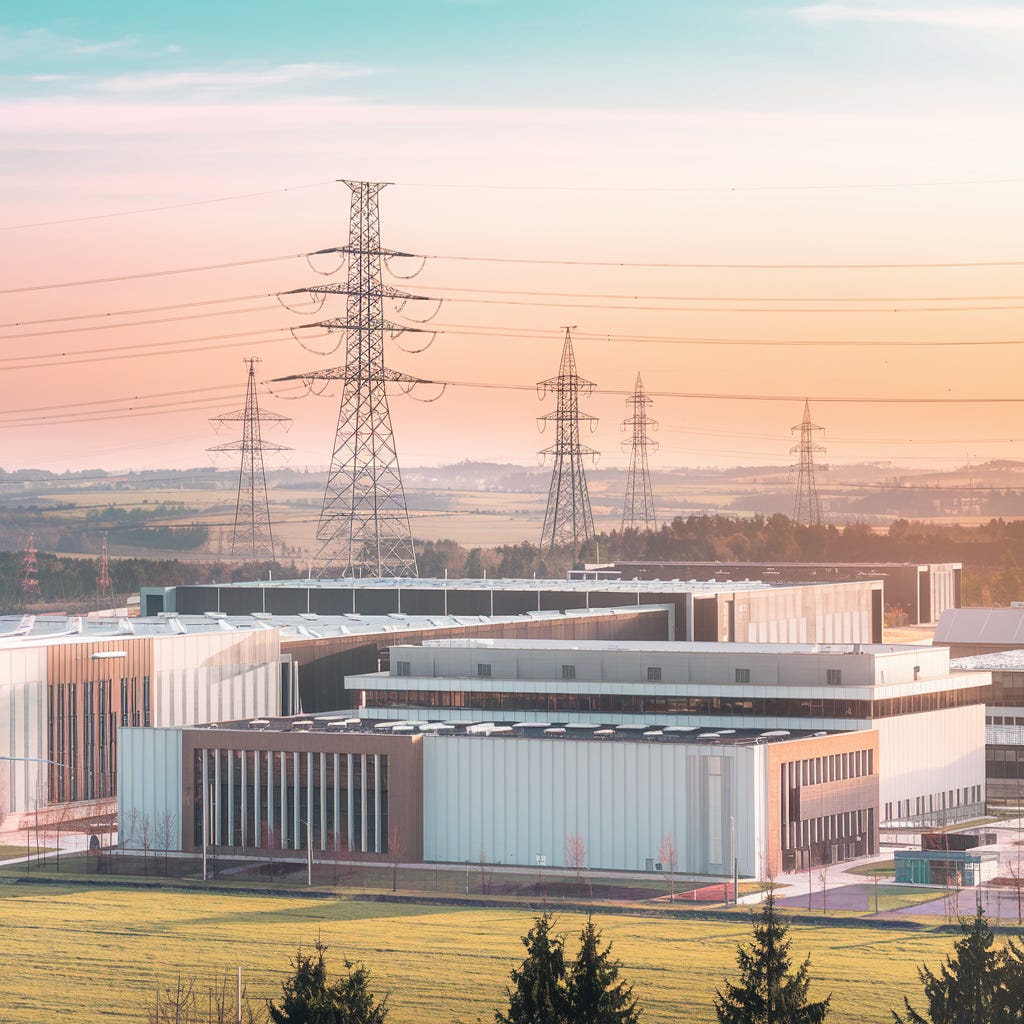Gridlock: The Energy Crisis That's Rewriting Data Center Investment Strategy
The next wave of AI infrastructure won’t be unlocked by faster chips. It’ll be unlocked by who controls the power and how fast they can deliver it.
Welcome to Global Data Center Hub. Join 1000+ investors, operators, and innovators reading to stay ahead of the latest trends in the data center sector in developed and emerging markets globally.
"We’re kind of running out of power in the next 18 to 24 months."
—Marc Ganzi, CEO, DigitalBridge
While most investors are focused on land, chips, and permitting, a more foundational bottleneck is quietly tightening its grip on the global data center sector:
Power.
As AI demand skyrockets, power scarcity and grid constraints are emerging as the biggest threat to data center investment returns.
And the numbers don’t lie.
By 2030, U.S. data centers could consume up to 12% of total electricity demand, triple today’s share. Globally, the figure could reach 3%. That’s not a technology problem.
That’s a grid problem.
In this article, I break down why power is becoming the gating constraint on digital infrastructure, how it’s reshaping investment decisions, and what the smartest capital is doing to adapt.
The Hard Limits of Growth
Data centers don’t just need land. They need energy and lots of it.
But unlike buildings, power can't be deployed at hyperscale speeds.
In leading markets like Northern Virginia and Silicon Valley, grid infrastructure timelines are now longer than data center build cycles.
Grid connections that once took 18 months are now taking 3 to 10 years. Substations are delayed. Transformers have 2-year lead times. Transmission upgrades can take 8 years or more.
This mismatch is fueling a chain reaction:
Power constraints are now the #1 driver of site selection
Vacancies in top markets have dropped below 1%
Facility construction costs and rents are spiking
Investors are being forced into unfamiliar secondary markets—and betting on future grid capacity that may not arrive in time
If capital wants to move fast, it needs energy that moves faster. And the firms mapping transformer backlogs and regional T&D choke points are seeing alpha others miss.
The $500 Billion Question
According to McKinsey, meeting data center power demand by 2030 will require over $500 billion in new capacity investment globally. That’s 50+ gigawatts of new generation, equal to about 50 large nuclear plants.
But here’s the kicker: there are already 1,600+ GW of generation capacity sitting in U.S. interconnection queues today.
That’s more than twice the size of the entire U.S. grid.
We don’t have a generation problem.
We have a grid bottleneck.
And this bottleneck is distorting everything:
Delays push back ROI timelines
Smaller investors can’t compete for limited capacity
Developers are forced to self-fund transmission, storage, or alternative generation
The investment story of AI infrastructure is starting to look a lot like the investment story of energy infrastructure. They’re converging fast.
How Smart Capital is Responding
If you’re still underwriting power access as a given, you’re already behind.
The best investors are pivoting from passively reacting to power constraints to actively de-risking them. Here’s how:
1. Early-Stage Power Mapping
Investors are now mapping substation proximity, grid capacity, and T&D infrastructure before they bid on land. Secondary markets like Iowa and Wyoming are gaining traction precisely because they have slack capacity.
2. Contracting with Utilities
Large operators are offering upfront capital or long-term PPAs to de-risk utility investments. This also includes co-developing substation assets or bundling grid upgrades into their own project capex.
3. On-Site and Distributed Power
Some are exploring natural gas, fuel cells, and small modular nuclear reactors (SMRs). While SMRs aren’t yet ready at scale, they’re becoming part of the longer-term site planning conversation.
4. Playing the Long Game in Secondary Markets
Cheaper power, longer timelines. Some investors are betting on 3–10 year T&D buildouts in power-rich but underbuilt regions. This is a long-duration play, but for those who can wait, it could pay big.
Beyond the Grid: Operational and ESG Pressures
Even if you get power, the challenges aren’t over.
Labor shortages in the tens of thousands are adding cost and time.
Equipment delays (e.g., 2-year wait for transformers) are common.
Sustainability mandates require 24/7 carbon-free energy, yet natural gas use is rising.
This isn’t just a CapEx game anymore. It’s a coordination problem across utilities, regulators, and tech platforms.
Meanwhile, in regions like the Middle East, Southeast Asia, and China, governments are taking a different approach: building power-first AI infrastructure zones, integrating data center policy with sovereign energy strategy.
The U.S. and Europe will need to reconsider energy sovereignty, not just compute scale, if they want to remain competitive.
Final Take: Power is the Moat Now
If you're investing in AI infrastructure, the question isn't whether there's demand.
The question is: can you deliver power to that demand fast enough?
Permitting, land, and chips still matter, but power is the new gatekeeper.
And the capital that solves the power problem is the capital that captures the AI wave.
In the race to build the digital economy, power isn't just a line item.
It’s the foundation under your capital stack.
And only those who control it will compound from it.

